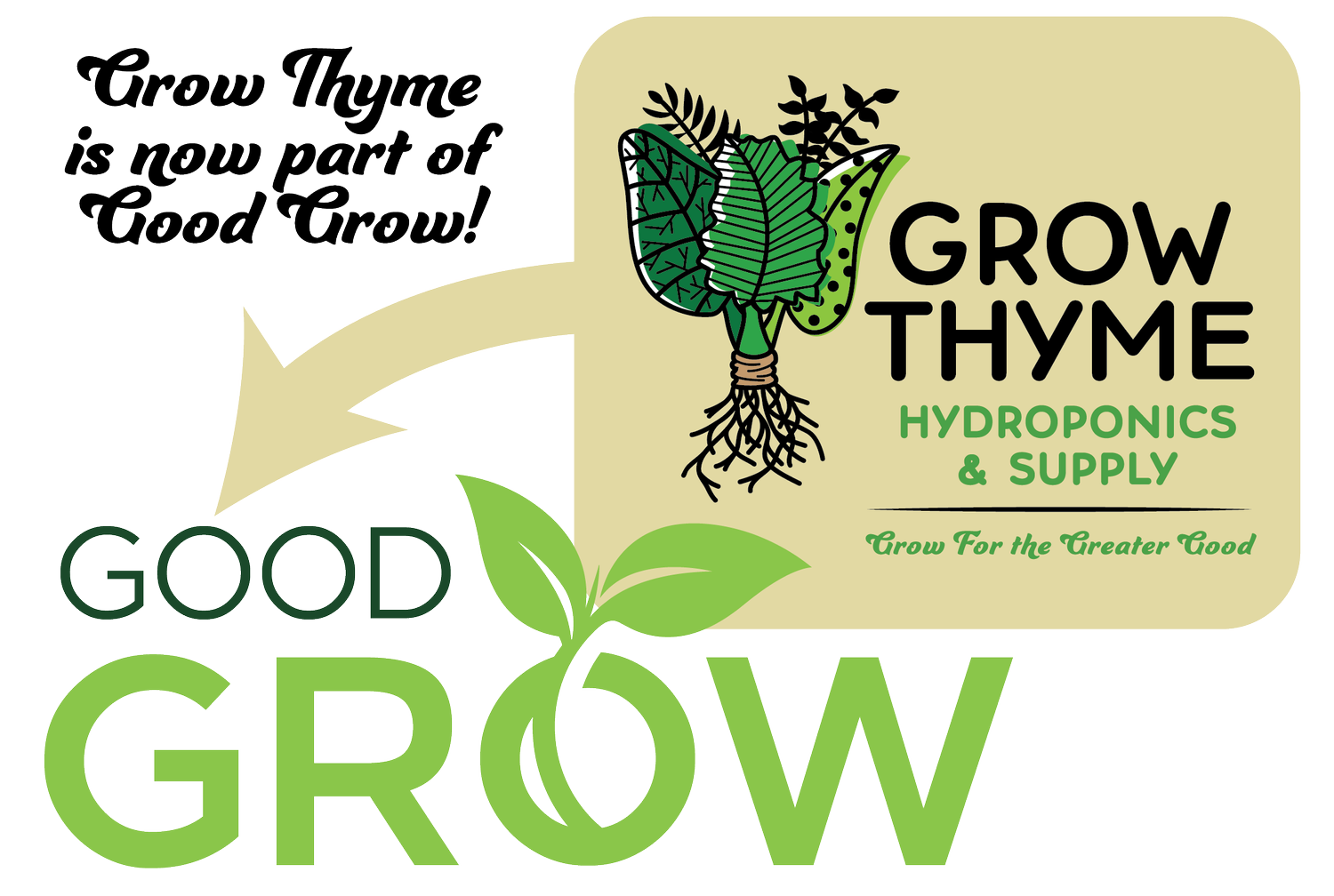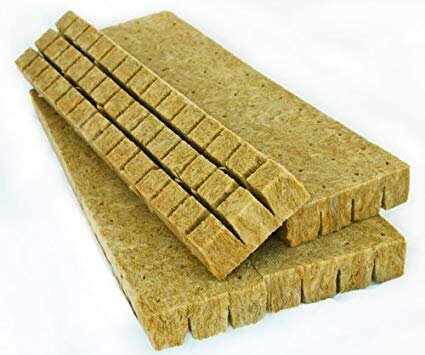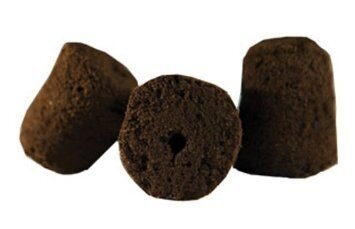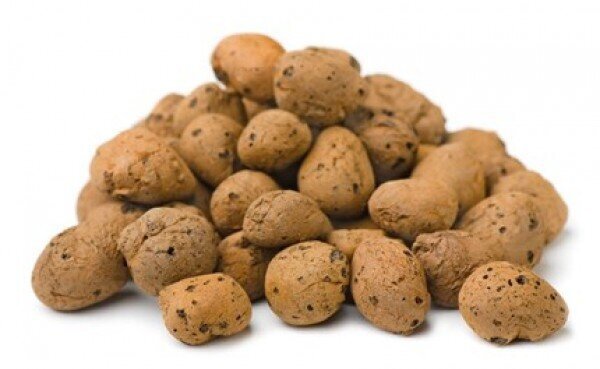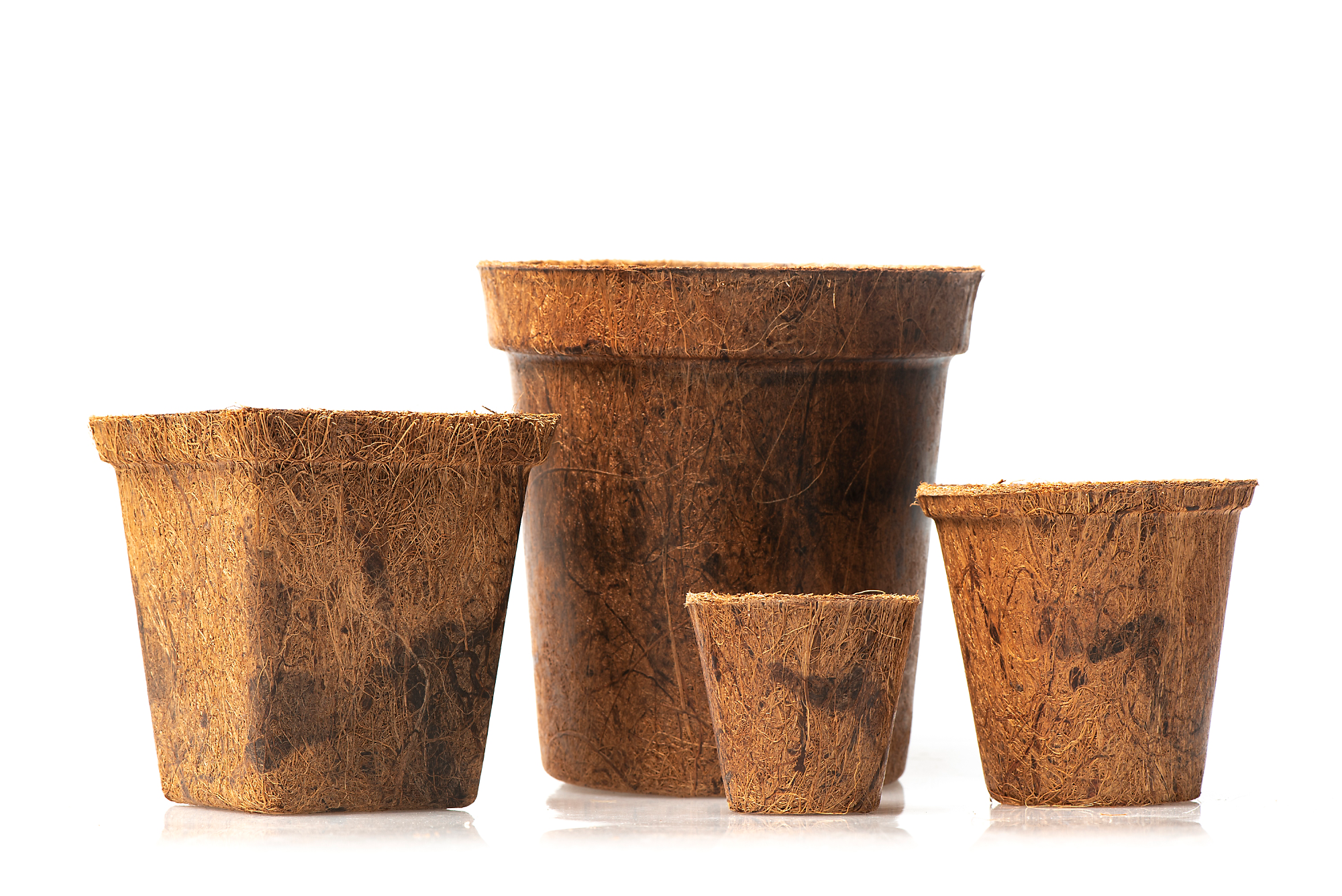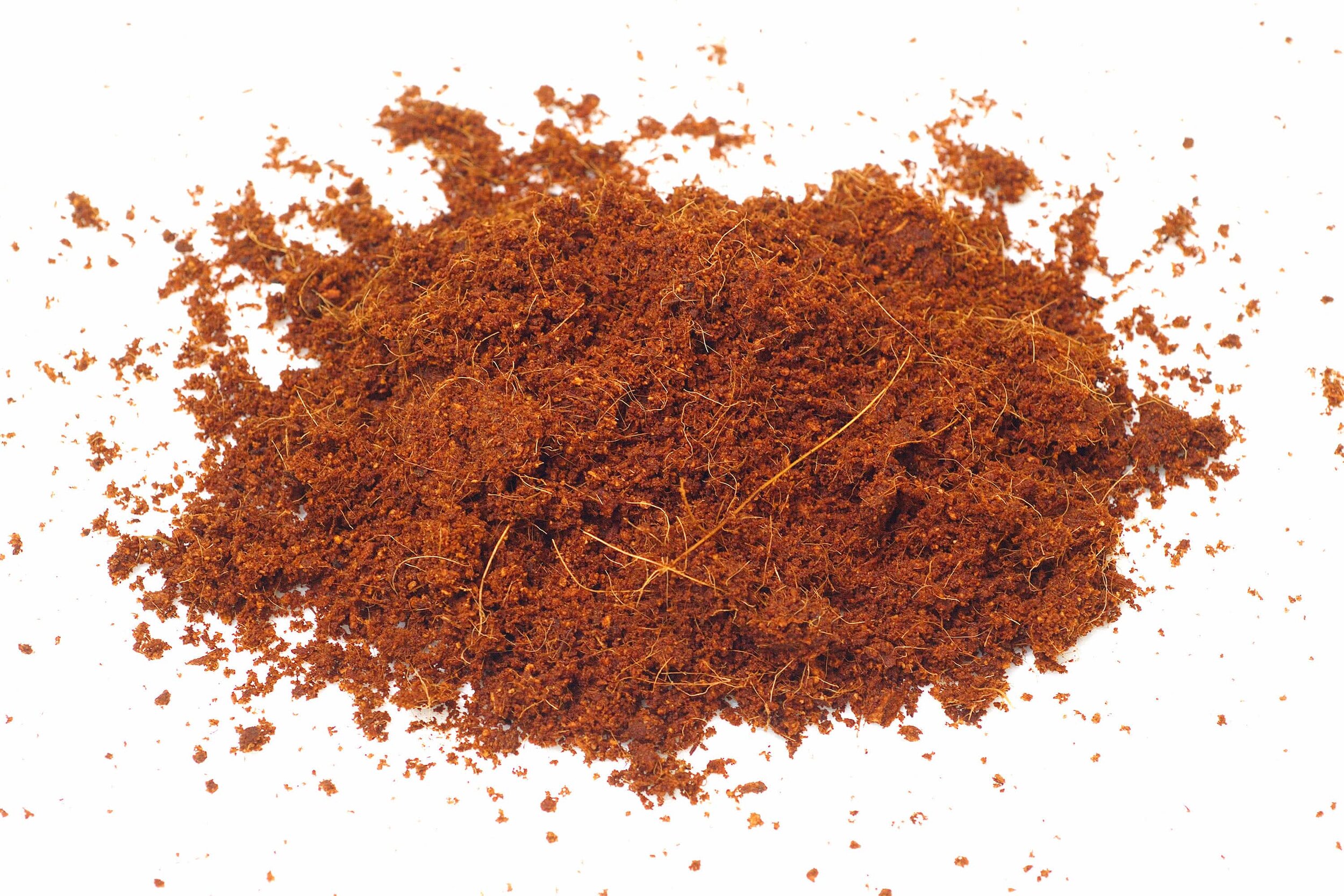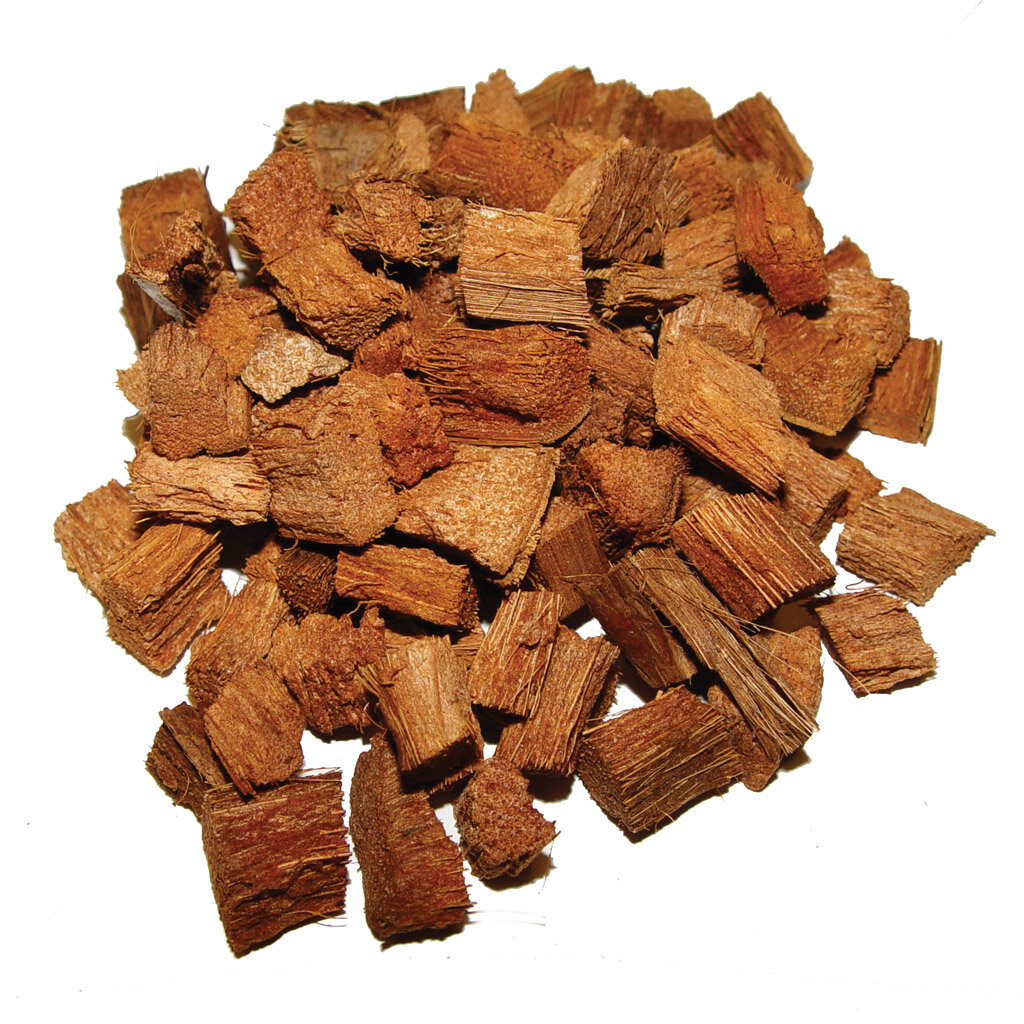Learn About Growth Mediums
In traditional growing techniques, the soil provides the plants with nutrition. It takes a lot of effort for the roots to extract that nutrition over time, causing a slower growing process.
In hydroponics, we are providing the plants with easier nutrition, but we still need to provide the plant base with physical support, which we call the growth medium.
Rock Wool –
Rock wool is sometimes referred to as stone wool and is one of the most popular growing mediums. It is made from melting basaltic rocks and spinning the rock lava into fibers. It looks similar to insulation that you might find in your wall, but rest assured rock wool is safe for your plants.
Beginner and expert growers alike naturally gravitate towards rock wool because it is easy to work with. The balance of porosity and water retention help fight the urge to over water. Even if it is over watered, the crop will normally make it out of the seedling stage.
Rock wool can be found in sheets, blocks, or loose. Some rock wool blocks can be stacked on top of each other, making the growing process from seedling to full plant easy. Rock wool has a naturally high pH of around 8, caused by lime used in the manufacturing process. It is important to bring that pH level down before planting your seeds because many plants need a pH of around 6 to grow. To do this, you can soak the rock wool in a lower pH than what you would normally use for the plant. Ideally, rock wool should be submerged in a nutrient solution adjusted to pH 5-5.5 until all the rising bubbles are gone. Let your rock wool sit for about 30min then test the water to see what pH you are at before moving forward. Some growers suggest soaking rock wool for multiple hours but we have found that 30min is just fine for most vegetables.
When preparing rock wool for seeds, it is important to drain some of the water while not squishing the block. To do this, we suggest shaking the block multiple times in a loose grip. Your rock wool should still be wet, but not nearly as soaked. Use a toothpick or tweezers to put seeds into the hole of your rock wool. Then, make sure to cover the top with excess rock wool or some other growing media to block out the light. Seeds need darkness to germinate!
Your rock wool will stay wet for a few days so you will not have to water immediately. After a few days, we recommend bottom watering rock wool so that algae does not have a chance to grow on the surface.
Rock wool cubes work great with all of the hydroponics systems.
Peat –
Sometimes called sphagnum peat, or sphagnum peat moss, this growing medium is our favorite! It is made from partially decayed plant matter with a proprietary blend of beneficial fungi, bark, peat and other organic materials.
General Hydroponic Rapid Rooter starter plugs are a great example of peat and we believe they produce the strongest and fastest growing seedlings. These plugs have the ability to hold a lot of water but they are very light weight when dry. This helps cut back on algae growth because as soon as your roots are visible, you can bottom water. Peat normally has a low pH around 4 so you should raise that up before planting your seeds.
The plugs can be soaked just like rock wool and once you see these results you will want to start all of your seeds in peat. Make sure to cover your seedlings with something to create the dark space needed for germination.
Peat plugs can be used in all different hydroponic systems, but we recommend using loose peat in Kratky and Deep Water Culture systems.
Expanded Clay Pellets –
These pebbles are sometimes called Hydroton, which references one of the original manufacturers of the product. Other times, they are called light expanded clay aggregate, clay pellets, or clay pebbles.
Clay pellets have a neutral pH and are big enough to use in any hydroponic system without the risk of your pump being clogged.
Make sure to rinse your clay pellets before using in the system. Clay pellets have pores that can retain some water but drain quickly. It is difficult to over water clay pellets making it great for beginners. Clay pellets can easily be added to a net cup filled with some other growing medium as an easy way to block light from the water in your system. They can also be washed and used multiple times making it one of the most affordable options to grow with in a hydroponic system.
We recommend starting your seeds in another medium then adding clay pellets to your system later on.
Coconut Coir –
Coco coir is a growing medium made from the husks of coconuts. This substrate is popular with both organic and conventional hydroponic growers. Coco coir is closer to an ideal neutral pH for most plants, between 5.2 and 6.8. This means coco coir is ready to use for most plants without adding lime.
It is VERY important to wash your coco coir before using because if it is not washed properly it can have high levels of salt. Your salt sensitive crops will thank you later!
We’ve found that adding coco coir to the top of rock wool to cover seeds is a great way to get things started. It can easily be removed once your seedlings have sprouted by gently shaking the rock wool cube upside down before transferring to your hydroponic system.
Some growers prefer to use coco coir as the main growing medium and that is okay too. Just be careful about what system you use with coco coir because it can easily clog up pumps.
We recommend using coco coir for Kratky and Deep Water Culture systems until you become comfortable with how it will interact with your plants.
Coconut Peat –
Like coco coir, this growing medium is made from coconuts. It is much finer than coir and is sometimes called coco dust or pith.
Coco peat can hold a ton of water so it is oftentimes mixed with peat moss, perlite, or another porous substrate to improve drainage. Using coco peat only can cause your medium to compact and will result in poor drainage.
Similar to coco coir, the pH is ideal for most vegetables without the need to add lime. Make sure to rinse and dry your coco peat before starting your seedlings or transplanting to your hydroponic system.
We recommend using coco peat for Kratky and Deep Water Culture systems until you become comfortable with how it will interact with your plants.
Coconut Chips –
Like coir and peat, coco chips are also made from coconuts. Coco chips are thick and chunky as compared to the other options and look like wood chips. This makes for a great balance of water retention and drainage.
You can combine coco chips with another medium or you can use it as a stand alone option. We normally recommend mixing coco chips with coir for a long lasting and easy to use substrate. Be careful when using coco chips in systems with a pump. Make sure not to drop any chips into the reservoir because it can easily damage your pump and cause your system to stop working. Using the right net cup can help with keeping your reservoir clean.
Perlite –
If you have ever seen the little white pieces in regular potting soil, then you are already familiar with perlite. It is made by heating volcanic rock until it pops like popcorn. This results in a lightweight expanded rock.
Perlite can be used in a variety of ways, but in hydroponics it is cheap, organic, lightweight, and great for aerating heavy substrates. You can mix it in with coco and peat to help with water drainage. There are tons of different sizes and shapes of perlite, so it can be used as a standalone hydroponic substrate, too.
These little pieces are easy to lose in your reservoir so we recommend using it in Kratky and Deep Water Culture systems until you become comfortable with how it will interact with your plants.
Alternative (but not as common) substrates include sand, sawdust, rice hulls, river rock, wood bark, phenolic foam, and gravel.
Growth mediums, like the systems themselves, all offer different pros and cons, but essentially are just there to provide physical support to your plant. If you are still unsure which to use, contact us—we will be glad to assist you!
